Army helicopter crashes in J&K’s Kishtwar; Technician killed, 2 pilots injured
Radhika Bansal
05 May 2023
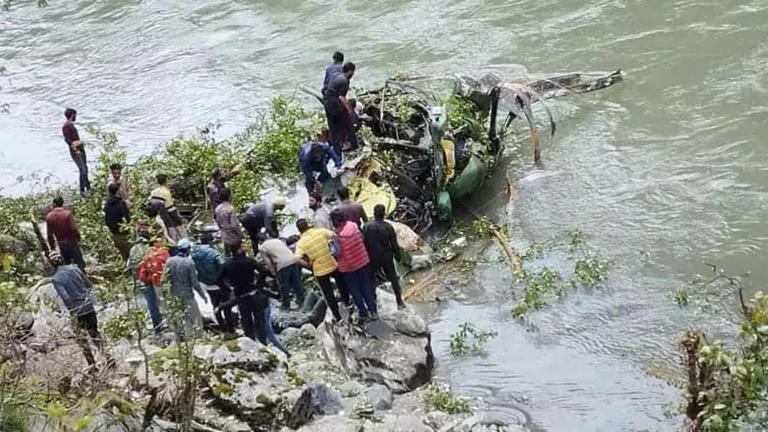
In Jammu and Kashmir's Kishtwar district, an army helicopter with two people on board crashed in a forested area due to a technical fault on Thursday, May 4. Two pilots on board were injured and a technician was killed in the incident. The officials said the crash occurred in the hill district’s Marwah area.
"At about 1115 hours on 04 May 2023, an Army Aviation ALH Dhruv helicopter on an operational mission made a precautionary landing on the banks of Marua river in the Kishtwar region of Jammu and Kashmir," the Udhampur-based Northern Command said in a statement. The pilots had reported a technical fault to the Air Traffic Controller (ATC) and proceeded for a precautionary landing, it said.
"Due to the undulating ground, undergrowth and unprepared landing area, the helicopter apparently made a hard landing. Immediate rescue operations were launched and Army rescue teams reached the site," the statement said. The Army said the injured were evacuated to the command hospital in Udhampur. The Army identified the deceased as Craftsman (Avn Tech) Pabballa Anil. Craftsman Pabballa Anil later succumbed to his injuries. The 30-year-old was a native of Malkapur village in Telangana’s Rajanna Sircilla district.
Defence sources said the technician succumbed to his injuries, while the pilots were "stable". The wreckage of the helicopter was found on the banks of the river, said Senior Superintendent of Police, Kishtwar, Khalil Ahmad Poswal.
HAL's ALH Dhruv was recently cleared
The aircraft was an advanced light helicopter called ALH Dhruv – a twin-engine utility aircraft indigenously developed by Hindustan Aeronautics Limited (HAL). Another ALH Dhruv – of the Indian Coast Guard – had crashed in Kochi in March after making a forced landing during a test flight. All three on board were safe.
The fleet of ALH Dhruv helicopters has started flying operations again, the Hindustan Aeronautics Ltd (HAL) said in a release on Monday, May 1. This comes less than a month after the operations of the helicopters were halted by the Indian Navy following an accident off the Mumbai coast.
"In the wake of the ALH Dhruv accident off the Mumbai coast, the Navy halted the operations of ALH Dhruv Helicopters until investigators find the reason for the incident and precautionary checks are carried out," the company had then said.
The ALH choppers are flown by all three defence forces, including the Army, Navy, Air Force, and the Indian Coast Guard. Advanced Light Helicopter or ALH-Dhruv is an indigenously developed utility aircraft by HAL with a twin-engine.
Even though its development was started in 1984, and was initially designed with Germany's assistance Messerschmitt-Bolkow-Blohm (MBB), the helicopter was first flown in 1992 but entered service after certification in 2002. According to HAL, the aircraft is "type –Certified" for military operations by the Centre for Military Airworthiness Certification and civil operations by the Directorate General of Civil Aviation. The major variants of Dhruv are classified as Dhruv Mk-I, Mk-II, Mk-III, and Mk-IV.
Previous Crashes
Last October, another Indian Army ALH, known as the Rudra crashed in Arunachal Pradesh, killing five personnel. The Rudra is an armed version of the ALH Dhruv. It brought to focus the series of crashes of the indigenous helicopter, which is the backbone of the Indian Army.
Earlier this March, two pilots were killed after an Indian Army Aviation Cheetah helicopter crashed near the Mandala hills area in Arunachal Pradesh. A search operation was carried out by the Indian Army, Sashastra Seema Bal (SSB) and police after the crash. According to officials, Army's Cheetah helicopter was on an operational sortie when it lost contact with the Air Traffic Controller. It was reported to have crashed near Mandala, West of Bomdila.’
In March 2022, the government told Parliament that 42 Indian armed forces personnel were killed in 45 aircraft and helicopter crashes in the last five years.
Read next
Air India on Thursday, May 4 said it has received an overwhelming response for its recruitment drive for pilots and has got more than 700 applications in the past week. The airline, which currently has more than 1,800 pilots, has placed orders for 470 aircraft with Boeing and Airbus, including for wide-body planes.
On April 27, the carrier issued an advertisement for more than 1,000 pilots. It is looking for captains, first officers and trainers across A320, B777, B787 and B737 fleets. In a statement on Thursday, an Air India spokesperson said the airline has received an overwhelming response to its recruitment advertisement for pilots released late last week.
"The recruitment of pilots is in preparation for the augmented large fleet of 470 aircraft. We have already received over 700 applications in the last few days in response to the advertisement which is under process. As a continuation of this recruitment process we are conducting walk-in interviews in Mumbai, Delhi and Bengaluru," it said.
Many pilots of cash-strapped Go First, which has filed for voluntary insolvency resolution proceedings, are also looking for other opportunities, including at Air India, according to industry sources. Tata Group has four airlines -- Air India, Air India Express, AIX Connect and Vistara, which is a joint venture with Singapore Airlines. The group is in the process of merging Air India Express and AIX Connect as well as Vistara with Air India.
Air India & Vistara On Hiring Spree Ahead Of Merger
A planned merger of Air India with Vistara and the launch of Akasa Air have increased competition for staff and planes as the industry recovers. Vistara held walk-in interviews for cabin crew in Delhi and Mumbai on Thursday and sought online applications from pilots. Air India and Vistara also conduct walk-in and online interviews to hire pilots for Airbus A320 aircraft. Go First’s entire fleet is made up of A320 jets and the airline has over 700 pilots on its rolls. Almost the entire narrow-body fleet of Air India and Vistara consists of planes from the A320 family of aircraft.
Air India said on Twitter the hiring drive in Delhi and Mumbai would be extended by a day to Friday. The airline, bought back from the government last year by salt-to-software Tata group, plans to hire more than 4,200 cabin crew and 900 pilots this year as part of a major revamp which also includes orders for a record 470 jets. Air India’s drive to step up the hiring of pilots also comes at a time when it faces resistance from unions of its existing pilots over revised pay contracts.
The flag carrier is expanding its fleet and network, revamping its customer proposition, and improving reliability in operations. Earlier in April, the airline said it had concluded its five-year transformation plan’s first phase, Vihaan.AI
Between May 2022-February 2023, Air India hired over 1900 cabin crew. Over 1,100 cabin crew have been trained in the last seven months (between July’22-January’23), and in the past three months, approximately 500 cabin crew have been released for flying by the airline. The first phase in the airline's transformation journey focussed on addressing legacy issues of the airline and laying the foundation for future growth.
Air India also recently announced it will use artificial intelligence-driven chatbots and other initiatives as part of modernising the digital systems for which it has made an initial investment of USD 200 million.
Go First Employees Rush To The Hiring Drive
Dozens of pilots, many from crisis-hit Go First, flocked to a Tata group hotel near Delhi on Thursday for walk-in interviews with the conglomerate's Air India airline. Go First's announcement on Tuesday that it had filed for bankruptcy as demand for post-pandemic air travel in the world's most populous country boomed came as a shock to many employees.
"It is very disheartening, the airline was functioning as if everything was normal," said a pilot who joined Go First two years ago and was waiting in a long line at Tata's Taj Hotel. “We have to jump ship to keep our flying licences current.” While Air India, Vistara and the country's biggest airline IndiGo have conducted similar hiring drives in the past, the people said turnout was larger than normal. They attributed the numbers to the plight of Go First, formerly known as Go Airlines (India) Ltd, which has around 7,000 employees.
Following Go First’s insolvency plea, a large number of the airline’s employees, who were already suffering due to delayed salaries, are approaching other Indian carriers for jobs. Although the Go First management has come out and said that the promoters — Wadia group — are committed to the airline and the insolvency plea was aimed at its revival, industry insiders believe that Go First might not take to the skies again anytime soon.
Cash-strapped Go First Tuesday announced that it filed for voluntary insolvency proceedings with the National Company Law Tribunal (NCLT), blaming engine manufacturer Pratt & Whitney (P&W) for its financial situation. The airline said that it was “forced to apply to the NCLT” after “the ever-increasing number of failing engines supplied by Pratt & Whitney’s International Aero Engines” led to the grounding of 25 aircraft, or half its fleet of Airbus A320neo planes, and significant financial stress.
Read next
SpiceJet's lessor, Aircastle, has filed for insolvency. This action comes after SpiceJet failed to make lease payments, prompting Aircastle to file a lawsuit. SpiceJet, India's leading low-cost airline, has been taken aback by this news.
Background
SpiceJet is a low-cost airline that has been fighting financially to stay alive. The airline has been dealing with a variety of concerns, including rising fuel prices, fierce competition from other carriers, and regulatory issues. SpiceJet has been investigating several alternatives to solve these difficulties, including selling off part of its assets and generating funds through the sale of shares.
SpiceJet is Being Sued by Aircastle
Aircastle filed a petition against SpiceJet in the High Court of Delhi, requesting that the airline be declared bankrupt. SpiceJet, according to Aircastle, had been in arrears on lease payments for some months on four B737-800s, and its financial condition had deteriorated to the point that it was unable to satisfy its commitments.
Current Scenario
Aircastle, SpiceJet's Dublin-based lessor, has filed an insolvency case with the NCLT for unpaid lease fees on four B737-800 aircraft. This petition was filed on May 4 under Section 9 of the Insolvency Bankruptcy Code (IBC), according to sources. The suit was filed in response to the airline's unpaid lease rentals on four B737-800s.
Ramifications for SpiceJet India's Aviation Industry
If Aircastle's case is successful, it might have major consequences for SpiceJet. The airline might be driven into insolvency, which would entail a court-supervised reorganization of the corporation. This might result in a huge loss of value for stockholders as well as a disruption in the airline's operations.
Conclusion
The insolvency petition filed by Aircastle against SpiceJet has substantial repercussions for the airline and its stakeholders. The airline's debt will be restructured and negotiated with its creditors throughout the bankruptcy process, which may result in changes to its operations and business model.
With Inputs from Business Standard
Read next
Vistara Operates India’s First Domestic Flight with Sustainable Aviation Fuel
Abhishek Nayar
05 May 2023
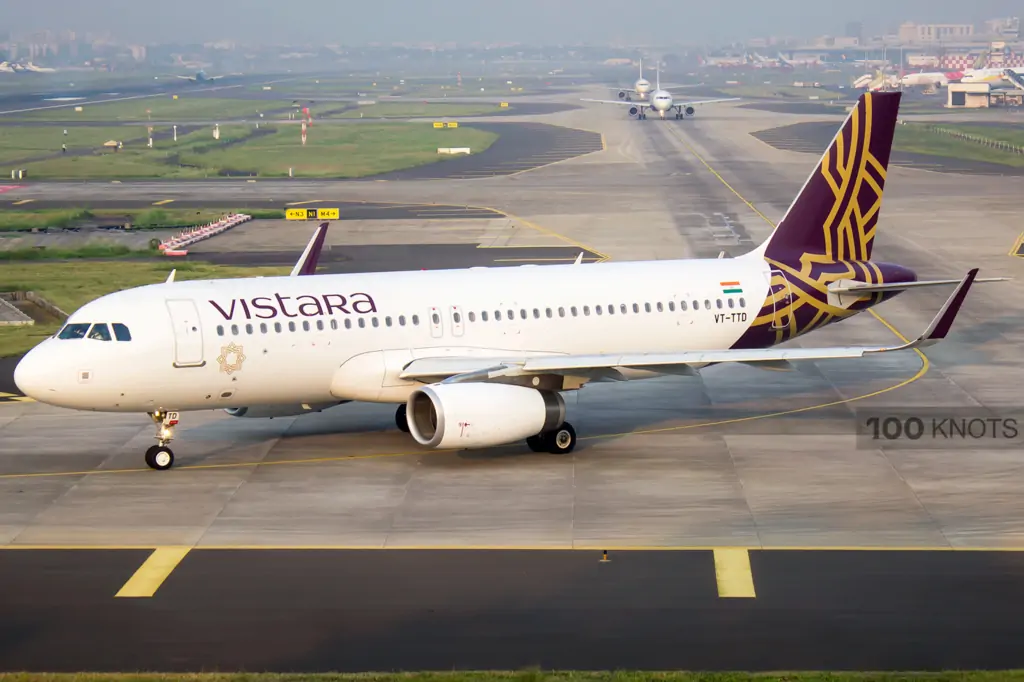
Vistara, one of India's premier airlines, has taken an important step towards sustainability by utilising sustainable aviation fuel (SAF) on its Boeing 787 aircraft. This action demonstrates Vistara's dedication to lowering its carbon footprint and encouraging sustainable practices in the aviation sector.
What Exactly is Sustainable Aviation Fuel
SAF is a renewable fuel created from a variety of feedstocks, such as plant oils, waste materials, and agricultural residue. SAF has a significantly reduced carbon footprint and produces fewer pollutants than traditional jet fuel, making it an ecologically friendly choice.
Why is Vistara using SAF
SAF provides many advantages for airlines, including fewer greenhouse gas emissions, more economical operational costs, and enhanced fuel efficiency. Vistara's use of SAF in its Boeing 787 aircraft is a big step towards meeting its environmental objectives while also contributing to worldwide efforts to cut carbon emissions.
Present Scenario
Vistara, a full-service carrier, said on Thursday that it was flying a Boeing 787 on the Delhi-Mumbai route utilizing sustainable aviation fuel (SAF). According to the airline, this is the first time an Indian carrier has flown a commercial domestic flight on a wide-body aircraft utilising a blend of 17% SAF and 83% conventional jet fuel. According to the airline, the Delhi-Mumbai flight utilizing mixed SAF helped them save around 10,000 pounds of CO2.
A ferry flight from Charleston International Airport in South Carolina to Indira Gandhi International Airport in New Delhi used a blend of 30% SAF and 70% conventional jet fuel, resulting in a reduction of approximately 150,000 pounds of CO2 emissions over the fuel's life cycle, according to Vistara.
The Boeing 787 and its Effectiveness
The Boeing 787 is famed for its fuel economy, and the introduction of SAF can improve that even further. SAF has a greater energy density than traditional jet fuel, which can lead to improved fuel efficiency and reduced emissions. The deployment of SAF in Vistara's Boeing 787 aircraft can assist the airline achieve its environmental targets while also increasing operating efficiency.
Vistara's SAF Initiatives
Vistara has taken a number of steps to encourage the use of SAF, including collaboration with fuel providers and government authorities. However, airlines' adoption of SAF faces several challenges, including limited availability and higher SAF costs compared to conventional jet fuel. Despite these obstacles, Vistara's commitment to sustainability has allowed the airline to overcome them and set a precedent for others to follow.
The Impact on the Aviation Industry
The application of SAF in the aviation sector has the potential to revolutionize air travel while reducing carbon emissions dramatically. The adoption of SAF by Vistara is an important step towards reaching this aim and fostering sustainable practises in the airline sector. Other airlines have begun to adopt SAF, and this trend is expected to continue as the demand for environmentally friendly aviation practices grows.
Conclusion
In conclusion, Vistara's commitment to sustainability and the use of SAF in its Boeing 787 aircraft are significant steps towards reducing the aviation industry's carbon footprint. This is a positive step because it is critical for airlines to encourage sustainable practices and decrease the environmental impact of air travel.
Read next
For many years, the UAE has been a popular tourist destination due to its sunny weather, magnificent architecture, and luxury shopping. Emirates and Etihad, the UAE's two biggest airlines, recently announced an expansion of their interline agreement with the goal of offering greater itinerary alternatives for travellers and enhancing tourism in the UAE. The partnership, which includes codeshare agreements, will allow travellers to smoothly link between the two airlines while also offering access to a broader selection of destinations.
What Exactly is an Interline Agreement
Before we get into the intricacies of this statement, it's important to understand what an interline agreement is. An interline agreement is a contractual agreement between two or more airlines that permits them to sell tickets on one another's flights. Travellers may benefit from more convenient connections, access to a greater selection of destinations, and easier luggage transfers as a result of this.
The Agreement's Specifics
Travellers will be able to book flights that link effortlessly between Emirates and Etihad under the new partnership with a single booking reference and through-checked luggage. This will provide travellers with a broader selection of itinerary alternatives while also streamlining the booking process. The two airlines have also agreed to codeshare on a handful of routes, allowing passengers to book flights on one airline but travel on another.
Current Scenario
Emirates Airline and Etihad Airways have inked a Memorandum of Understanding (MoU) to expand their interline arrangement and give visitors to the UAE new route alternatives. This first-of-its-kind collaboration between the two UAE carriers intends to seize on the potential to increase tourism to the UAE from important source economies by allowing passengers to visit several destinations on a single itinerary.
Initially, each carrier will concentrate on attracting visitors to the UAE by developing inbound interline traffic from select points in Europe and China. The 'open jaw' configuration will allow guests to cover as much ground as possible when seeing Abu Dhabi, Dubai, or any other emirate, saving time by eliminating the need to fly home via their arrival airport. Customers flying into the UAE may also take advantage of 'multi-city flights,' which allow them to travel from one location on both airlines' networks to another conveniently served by either Emirates or Etihad.
"We are pleased to be working with Etihad Airways again, this time to allow each carrier to offer a new range of seamless travel options in and out of the UAE," said Sir Tim Clark, President of Emirates Airline. Emirates and Etihad are combining our talents in order to broaden our respective consumer offers and enhance UAE tourism. We think that this new arrangement lays a solid platform for future potential between both airlines and demonstrates our commitment to the UAE's aim of continuing economic diversification."
The enhanced interline relationship is based on both airlines' commitment to supporting the UAE government's goal of promoting tourism to the UAE and strengthening the UAE's status as a preferred worldwide destination. Tourism is an important pillar of the UAE economy, accounting for 5.4% of total GDP, or AED 116.1 billion (USD 31.6 billion), and sustaining over 1 million employment opportunities by 2027.
The Advantages for Travellers
For starters, because both airlines have huge networks, it will allow access to a broader selection of locations. This means that visitors will be able to see more of the UAE and beyond without having to plan separate flights or worry about connecting. Second, the deal will streamline the booking process by requiring travellers to make only one booking and check their luggage all the way to their ultimate destination. Finally, because the two airlines will be able to offer more appealing packages and deals, the agreement is likely to result in more competitive pricing.
The Effect on Tourism in the UAE
The ultimate goal of this interline agreement is, of course, to increase tourism in the UAE. Emirates and Etihad are seeking to entice more people to visit the nation by offering more convenient and appealing itinerary alternatives. This is especially significant given the impact of the COVID-19 outbreak on the tourism sector. By collaborating, the two airlines can provide a more appealing offering to travellers, which is expected to result in greater visitor numbers and a boost to the local economy.
Conclusion
Finally, the interline agreement between Emirates and Etihad is a welcome development for both travellers and the UAE tourism industry. The two airlines are assisting in overcoming some of the problems created by the COVID-19 epidemic and encouraging more people to visit the nation by providing more convenient and appealing itinerary alternatives. This new partnership is likely to be a win-win for both airlines and travellers, with a broader variety of destinations, simpler booking processes, and reasonable pricing.
With Inputs from Emirates
Read next
Pratt & Whitney's Geared Turbofan (GTF) engines have been at the centre of an array of issues as of late. One of the most recent developments is that Iraqi Airways has grounded all of its Airbus A220s due to engine issues. The incident has brought to light longstanding worries about GTF engines and their influence on the aviation sector.
Present Scenario
Pratt & Whitney designed the GTF engines to be more efficient and ecologically friendly than prior versions. However, they have encountered issues such as durability issues, engine failures, and a lack of spare part availability. The persistent problems with Pratt & Whitney's GTF engine have worsened, with the Iraq Civil Aviation Authority (ICAA) grounding all Iraqi Airways' Airbus A220s. According to the ICAA,
- Department of Safety, Civil Aviation Authority
- To: Iraqi Airways Company / General Manager's Office
- In reference to the operator of the two aircraft (A220-300) registered (YI-ARI) and (YI-ARG) in your company's fleet.
- We request that you halt all operations on all of your A220-300 until further notice and until the investigative processes are concluded. Please notify us as soon as feasible of your processes.
Iraqi Airways has four Airbus A220s, all of which are in the larger 300 category. All are less than two years old, with the first delivered in November 2021. The newest aircraft, YI-ARI, was delivered in January and is one of the two cited by the ICAA in their message.
The GTF Engine Problems
Durability Issues: One of the primary issues with GTF engines has been their durability. There have been instances of early wear and tear, which has resulted in engine breakdowns and pricey repairs. This has created substantial inconvenience for airlines since they have had to halt planes and cancel flights while the engines are repaired.
Engine Failures: Another issue with the GTF engines is that they have a history of failing in-flight. This is a major safety hazard that has resulted in a number of emergency landings. The origins of the failures are unknown, although they are assumed to be connected to the engines' complicated design and how they interact with the plane's systems.
Replacement Parts Availability: Another issue with the GTF engines has been the delay in the availability of replacement parts. As a result, airlines have had to halt flights and restrict capacity, resulting in considerable financial losses. The scarcity of spare parts has been linked to the engines' complexity as well as manufacturing concerns.
The Effect on Airlines
Grounded Planes: The GTF engine troubles have caused major interruptions for airlines. They have had to ground planes and cancel flights, which has impacted passengers and the aviation sector as a whole. Airlines have also suffered financial losses as a result of having to pay for repairs and compensate customers for cancelled flights.
Capacity Reduction: The scarcity of spare parts has also resulted in reduced capacity for aircraft. This implies they cannot function at full capacity, resulting in lost income and earnings. This has proved especially difficult for smaller airlines that rely on A220s and have few resources to cope with engine issues.
Concerns for Safety: The GTF engine failures in flight have created severe safety concerns for airlines and passengers. The hazards connected with engines have been emphasised through emergency landings and plane groundings. This has also had an impact on passenger trust in the airline sector.
Conclusion
The GTF engine troubles have had a considerable influence on the aviation sector. Airlines have suffered considerable financial losses as a result of jet groundings, limited capacity, and safety concerns. While Pratt & Whitney has acknowledged the engine problems, there is still a long way to go before the issues are completely resolved.
With Inputs from Airspace Africa, Economic Times

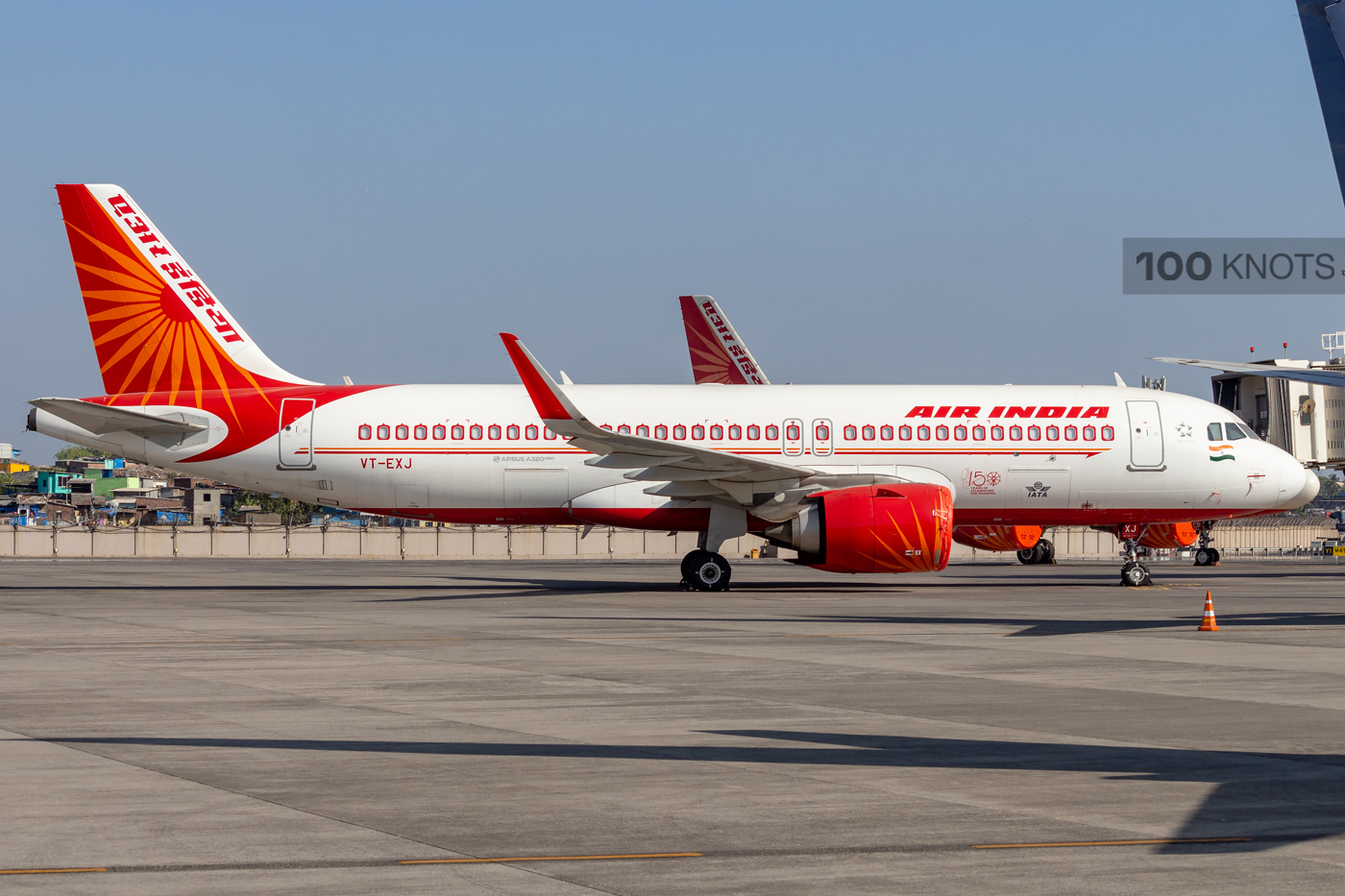

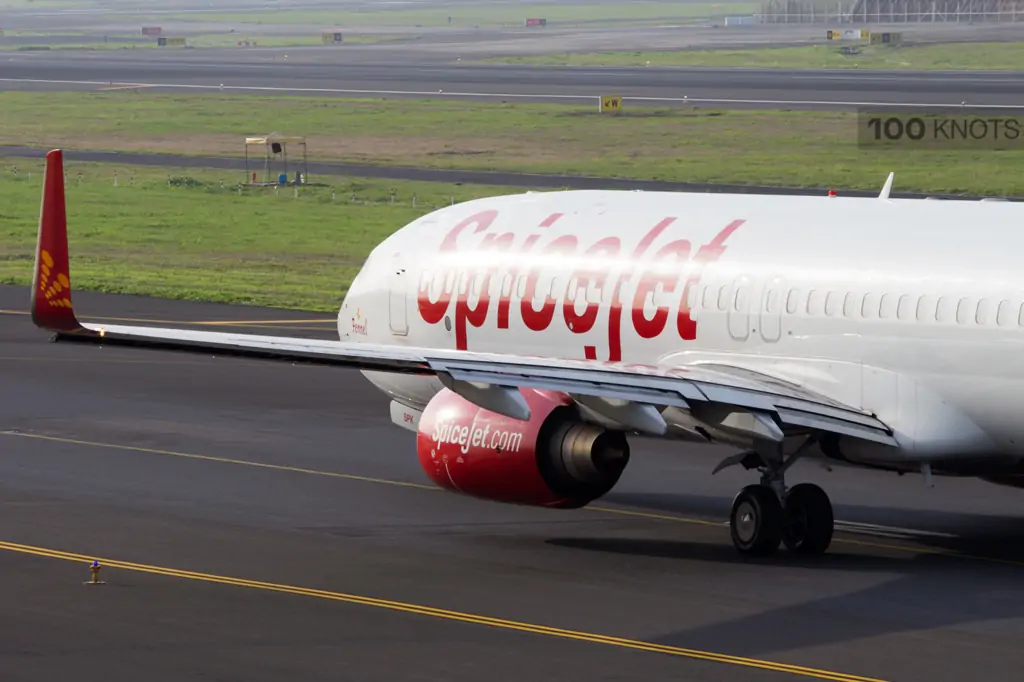

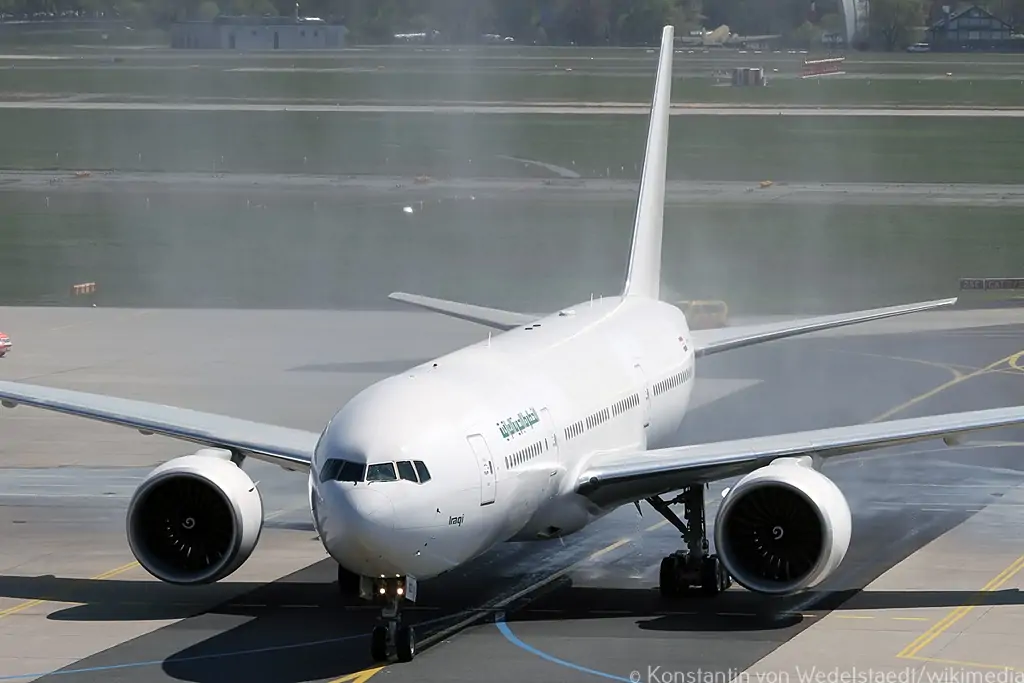
Comment